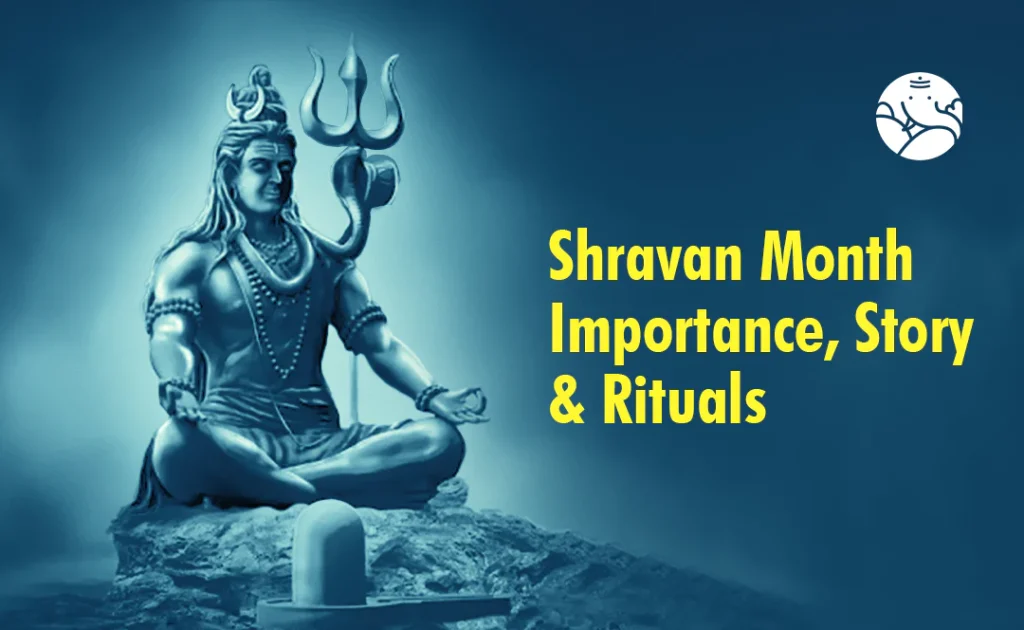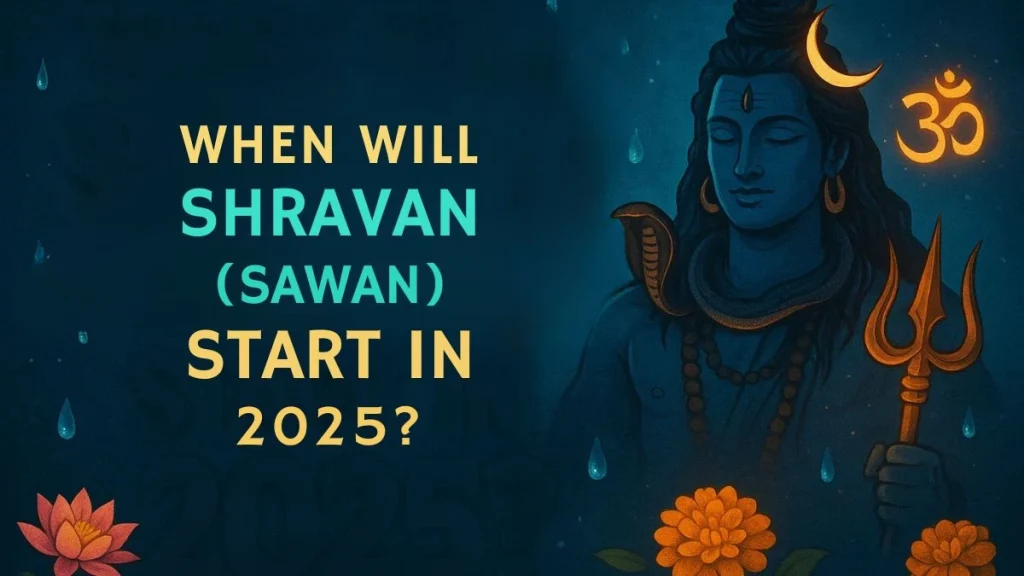
What is Shravan Month?
Shravan Month, also known as Sawan, is one of the most sacred months in the Hindu calendar. It falls during the fifth month of the Hindu lunar calendar and is dedicated to Lord Shiva. The entire month is considered highly auspicious for spiritual practices, fasting, and devotion.
Why is Shravan Month Celebrated?
Shravan holds immense religious importance, especially for devotees of Lord Shiva. According to Hindu mythology:
- During Samudra Manthan (churning of the ocean), a deadly poison (Halahala) emerged, threatening the existence of the universe.
- To save creation, Lord Shiva consumed the poison and held it in his throat, turning it blue — hence, his name Neelkanth.
- Gods offered the holy Ganga water to calm his pain, and this ritual continued throughout the month of Shravan.
- Devotees offer water, milk, and bel leaves to Lord Shiva as a symbolic gesture to reduce his suffering and express devotion.

How Long is Shravan Month?
The duration of Shravan month varies each year based on the lunar calendar. It usually:
- Begins in July or August
- Lasts for 29 to 30 days
- Ends before Bhadrapada month begins
🔔 In 2025, Shravan month starts from July 10, 2025, and ends on August 8, 2025 (dates may slightly vary region-wise).
Shravan Somvar: The Power of Mondays
Mondays during Shravan are considered most auspicious. They are known as Shravan Somvar.
- Devotees observe fasts (known as Somvar Vrat) on each Monday.
- Unmarried girls fast for a good life partner.
- Married women pray for their husband’s long life.
- Offerings to Lord Shiva include: milk, curd, honey, Ganga water, bel leaves, and bhang.
Common Rituals During Shravan
Here are the key rituals performed during this holy month:
1. Fasting (Vrat)
- Devotees observe weekly fasts on Mondays.
- Some people keep fasts on Tuesdays (Mangala Gauri Vrat) and Saturdays (Shani Vrat) too.
2. Temple Visits
- Visiting Shiva temples and offering Abhishekam (ritual bath) with water, milk, honey, and Ganga jal is common.
3. Chanting Mantras
- Recite “Om Namah Shivaya” and Maha Mrityunjaya Mantra daily.
4. Kanwar Yatra
- Some devotees (called Kanwariyas) carry holy water from the Ganges to offer it to a distant Shiva temple.
What to Do During Shravan Month
✅ Do’s:
- Offer water, milk, and bilva leaves to Lord Shiva.
- Chant Shiva mantras and perform puja daily.
- Visit Shiva temples regularly.
- Follow a vegetarian diet and maintain purity.
- Meditate, donate food and clothes, and do charity.
- Read Shiv Puran or Shiva Chalisa.
What NOT to Do During Shravan Month
❌ Don’ts:
- Avoid non-vegetarian food and alcohol.
- Refrain from onions and garlic.
- Don’t cut hair, nails, or shave (considered inauspicious).
- Avoid wearing black clothes.
- Don’t hurt animals or lie — keep thoughts and actions pure.
- Avoid sexual activity and physical intimacy during this period for spiritual reasons.
Special Days During Shravan
- Nag Panchami: Worship of snakes — observed on the 5th day of Shravan.
- Raksha Bandhan: A sacred festival of siblings — usually in the last week of Shravan.
- Shravani Purnima: The full moon day marks the end of Shravan.
- Mangala Gauri Vrat: Observed by married women on Tuesdays for marital bliss.
- Hariyali Teej: Celebrated by women for marital happiness and prosperity.
Benefits of Observing Shravan Month
- Mental peace and spiritual growth
- Fulfillment of wishes, especially marital and health-related
- Positive energy and removal of negativity
- Blessings of Lord Shiva and protection from evil forces
Conclusion
Shravan Month is not just a time of rituals, but a sacred opportunity to reset your spiritual path, detox your mind and body, and seek divine blessings. By observing fasts, chanting prayers, avoiding negativity, and embracing purity, you can connect deeply with Lord Shiva and experience inner transformation.

